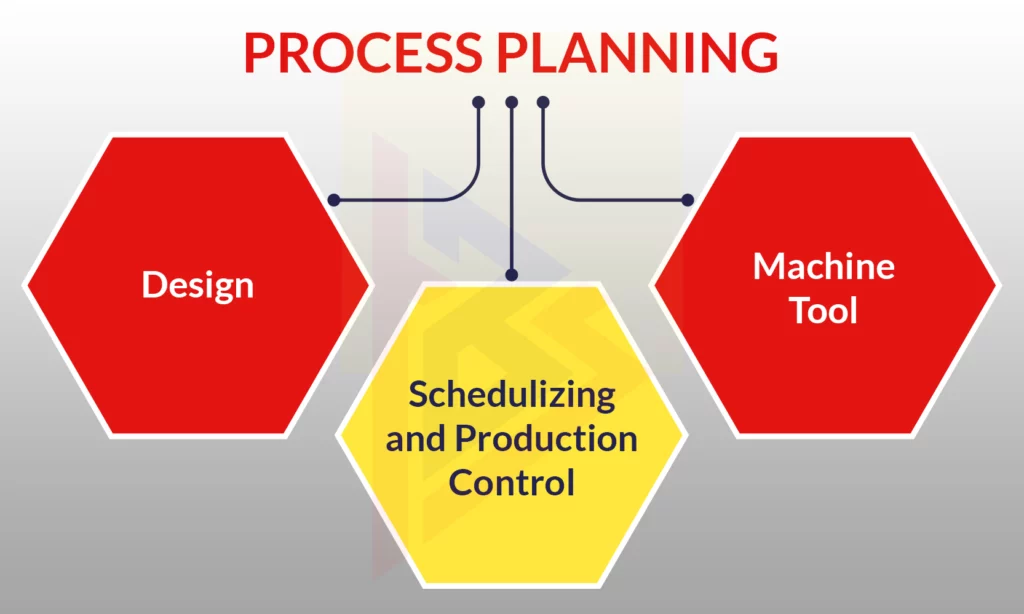
ASP.NET is a widely used web development framework that provides a robust and flexible platform for building dynamic web applications. Customization plays an important role in tailoring ASP.NET applications to meet specific business requirements. By following best practices for customization, developers can ensure the success of their projects and deliver high-quality and efficient web applications.
In this article, we will explore the best practices for customizing ASP.NET applications, covering various aspects such as planning, modular design, performance optimization, security considerations, and maintenance.
Explanation of ASP.NET and its importance in web development
ASP.NET development services is a powerful framework developed by Microsoft for building web applications. It provides a rich set of tools, libraries, and controls that simplify the development process and enable developers to create feature-rich, scalable, and secure applications.
Overview of customization in ASP.NET applications
Customization in ASP.NET refers to the process of modifying or extending the default behavior of an application to meet specific requirements. It involves adding new features, modifying existing functionality, or integrating third-party components to enhance the application’s capabilities.
Importance of following best practices for successful customization
Following best practices for customization is essential to ensure the reliability, maintainability, and performance of ASP.NET applications. It helps developers build applications that are scalable, secure, and easy to maintain in the long run.
Understanding Customizing ASP.NET Applications
The ASP.NET platform’s foundation provides excellent tools for customizing the web application. With the help of the numerous tools available on the platform, the app framework can be customized.
Definition of customization in the context of ASP.NET applications
Customization in ASP.NET involves making changes to the application’s behavior, user interface, or underlying code to align it with specific business requirements. It allows developers to tailor the application to meet the unique needs of their clients or users.
Benefits of customizing ASP.NET applications
Customizing ASP.NET applications offers several benefits, including enhanced functionality, improved user experience, increased productivity, and the ability to differentiate the application from competitors. It enables businesses to deliver tailored solutions that address specific challenges or provide unique features.
Common scenarios where customization is required
Customization is often required in scenarios such as integrating third-party APIs, extending existing functionality, implementing complex business rules, incorporating branding elements, and adapting the application to comply with industry regulations or standards.
Also Read: ASP.NET Development Service: Supercharging Your Website
Planning for Customization

It is always beneficial to plan out a website before you start building pages and generating code. The general design of the site and its navigation can be made simpler with earlier planning.
Assessing the project requirements
Before starting the customization process, it is crucial to identify and document the specific requirements and objectives of the project. This includes understanding the desired features, functionality, and user experience.
Setting clear objectives and goals helps in aligning the customization efforts with the project’s overall vision and desired outcomes. It provides a roadmap for the development team and ensures that the customization efforts are focused and targeted.
Defining the scope of customization
When customizing ASP.NET applications, it is essential to assess the impact on existing functionality. This evaluation helps in understanding the dependencies and potential risks associated with the customization process.
The level of customization required varies from project to project. It is essential to determine the appropriate level of customization based on the project’s requirements and constraints. This includes deciding whether to use built-in features, extend existing functionality, or develop custom modules.
Creating a customization plan
To ensure a systematic and organized approach to customization, it is important to identify the key components of the application that need customization. This includes specific modules, pages, controls, or business logic that require modification or enhancement.
Creating a timeline and allocating the necessary resources helps in managing the customization process effectively. It ensures the project stays on track and meets the defined milestones and deadlines.
Defining the testing and deployment strategies
A comprehensive testing and deployment strategy is crucial to ensure the quality and reliability of customized ASP.NET applications. This includes planning for unit testing, integration testing, user acceptance testing, and defining the deployment process.
Following Best Practices
We must always take best practices into account while customizing a project. Even though it takes more effort to decide which method is ideal for developing a certain function, it is still worthwhile.
Modularity and Separation of Concerns
A layered architecture promotes modularity and separation of concerns by dividing the application into logical layers such as presentation, business logic, and data access. This enables better maintainability, testability, and extensibility.
Using modular design patterns, such as the Model-View-Controller (MVC) pattern or the Model-View-ViewModel (MVVM) pattern, helps in organizing the application’s code and separating concerns. It enhances code reusability and makes the application more scalable and maintainable.
Use of Framework Features
ASP.NET provides a wide range of built-in features and controls that can be, leveraged for customization. These features include master pages, user controls, data binding, authentication, and authorization mechanisms. Utilizing these features reduces development time and effort.
ASP.NET offers extensibility points and hooks that allow developers to extend the framework’s behaviour or customize specific aspects of the application. This includes creating custom controls, providers, modules, or handlers to tailor the application to specific requirements.
Version Control and Source Code Management
Using a version control system, such as Git or Subversion, is crucial for managing customizations effectively. It allows developers to track changes, collaborate, and roll back to previous versions if needed.
Source code management tools, such as Visual Studio Team Services or GitHub, facilitate collaboration and code sharing among team members. These tools provide features like code reviews, branching, merging, and issue tracking, which streamline the customization process.
Documentation and Code Comments
Documenting customizations helps in understanding their purpose, implementation details, and potential dependencies. It aids in knowledge transfer, troubleshooting, and future maintenance of the customized ASP.NET application.
Adding meaningful comments within the codebase improves the maintainability of customized ASP.NET applications. It helps developers understand the code’s functionality, intent, and potential caveats.
Testing and Quality Assurance
Developing comprehensive test cases ensures that customizations meet the specified requirements and do not introduce regressions or conflicts with existing functionality. It includes unit tests, integration tests, and performance tests.
Regression testing is crucial when customizing ASP.NET applications to ensure that existing functionality remains intact after customization. Additionally, performance tuning helps optimize the application’s speed, responsiveness, and resource utilization.
Error Handling and Logging
Effective error handling improves the user experience and helps in troubleshooting issues. It involves catching and handling exceptions, providing meaningful error messages, and logging errors for future analysis.
Logging errors and exceptions help in diagnosing issues, monitoring application health, and identifying potential areas for improvement. It provides valuable insights into the application’s behavior and facilitates effective troubleshooting.
Performance Optimization

If you want to customise ASP.NET Applications then, performance should be your first priority. With performance, a website can be, made user-friendly. Moreover, it makes the website more enduring and scalable.
Identifying performance bottlenecks in customizations
When customizing ASP.NET applications, it’s important to identify any performance bottlenecks introduced by the customizations. This can be, done through profiling, load testing, and analyzing performance metrics.
Do Read: Advantages of ASP.NET Core when it comes to Building Microservices!
Techniques for improving performance in ASP.NET applications
Implementing caching mechanisms, such as output caching, data caching, or query result caching, can significantly improve the performance of ASP.NET applications. Caching reduces the load on the server and improves response times.
Reducing the number of database round trips and optimizing database queries can greatly enhance the performance of ASP.NET applications. Techniques like batching requests, using stored procedures, and indexing can improve query efficiency.
Leveraging asynchronous programming techniques, such as async/await or parallel processing, improves the responsiveness of ASP.NET applications. It allows the application to handle multiple concurrent requests efficiently and avoids blocking the main thread.
Security Considerations

Security is a critical aspect of customizing ASP.NET applications, as any vulnerabilities or weaknesses can expose the application to potential attacks or data breaches. It is essential to prioritize security throughout the customization process.
Implementing secure coding practices
Properly validating and sanitizing user input is crucial to prevent common security vulnerabilities such as cross-site scripting (XSS) or SQL injection. Input validation should be, performed on both the client side and server side.
Awareness of common security vulnerabilities, such as cross-site scripting (XSS), cross-site request forgery (CSRF), or insecure direct object references (IDOR), helps in avoiding them during customization. Applying secure coding practices mitigates these risks.
Role-based access control and authorization
Proper authentication and authorization mechanisms, such as role-based access control (RBAC) or claims-based authentication, ensure that users have the appropriate permissions to access specific resources or perform certain actions.
Ensuring the protection of sensitive data and resources is vital during customization. This involves encrypting sensitive data, applying secure communication protocols (HTTPS), and properly configuring access controls.
Maintenance and Upgrades

Considering future upgrades during customization helps minimize compatibility issues and ensures smooth transitions when new versions or updates of ASP.NET are, released. Staying up-to-date with the latest versions and patches is essential for security and performance reasons.
When upgrading an ASP.NET application, it is important to address any compatibility issues that may arise due to customizations. This may involve modifying custom code, updating third-party components, or adapting custom modules to work with the new version.
Maintaining backward compatibility for customizations is crucial to prevent disruptions to existing functionality. When introducing new features or modifications, care should be, taken to ensure they do not break or adversely affect the application’s existing behavior.
Regular maintenance tasks, such as monitoring application logs, fixing bugs, optimizing performance, and applying security patches, should be, performed to keep the customized ASP.NET application running smoothly and securely.
Bottom Line
So, the conclusion clearly explains that customizing ASP.NET applications requires careful planning, best practices, and a thorough understanding of the project requirements. By following the best practices discussed above, .net developers can ensure successful customization, resulting in scalable, secure, and efficient ASP.NET applications.
If you are still in search of cutting-edge technology solutions for your business then TechnoBrains Business Solutions is the word that revolutionizes your operations with the power of innovation and efficiency with our expert services. Get in touch with us today and let us propel your business to new heights!
Frequently Asked Questions
Yes, customization can be done without affecting the core functionality of an ASP.NET application. By following modular design principles and utilizing extensibility points.
To ensure the security of customized ASP.NET applications, it is important to implement secure coding practices, validate user input, protect sensitive data, and implement proper authentication and authorization mechanisms.
Yes, performance optimization is crucial for customized ASP.NET applications. Customizations can introduce performance bottlenecks, and it’s important to identify and address them through techniques
Regular maintenance tasks, including bug fixes, performance optimization, and security updates, should be performed on a scheduled basis. The frequency of these tasks may vary depending on the complexity and criticality of the application.
Yes, customizations can be reverted if needed, especially if version control and proper documentation are in place. Version control systems allow you to roll back to previous versions of the code.






